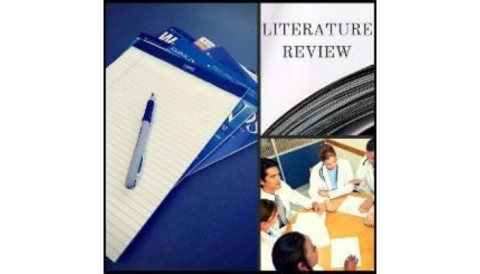Review: Layering of Different Materials to Achieve Optimal Conditions for Treatment of Painful Wounds
September 19, 2017
Temple University School of Podiatric Medicine Journal Review Club
Editor's note: This post is part of the Temple University School of Podiatric Medicine (TUSPM) journal review club blog series. In each blog post, a TUSPM student will review a journal article relevant to wound management and related topics and provide their evaluation of the clinical research therein.
Article title: Layering of different materials to achieve optimal conditions for treatment of painful wounds
Author(s): T. Maver, L. Gradišnik, M. Kurecic, S. Hribernik, D.M. Smrke, U. Maver, K. Stana Kleinschek
Journal name and issue: International Journal of Pharmaceutics, July 2017
Reviewed by: Asmaa Abada, Class of 2019, Temple University School of Podiatric Medicine
Introduction
Wounds tend to follow a certain algorithm when healing, which can be summed down to three distinct phases: hemostasic/inflammatory, proliferative, and remodeling. Chronic wounds are characterized as wounds that do not follow this pattern and fail to heal within 8 weeks. They tend to occur in patients that have uncontrolled comorbidities causing the healing cycle to get "stuck" in the inflammatory phase. There are roughly 6.5 million cases of chronic wounds noted annually in the United States. Thus, the need for better products that may induce quicker healing are highly sought after.
Pain associated with chronic wounds is a major deterrent to adequate wound healing, with most of the pain occurring during dressing changes. Recently, the topic of multilayer dressings geared toward providing pain relief has become very popular. The purpose of this study was to construct a multilayer dressing with various products/agents imbedded within, and to determine the effect of such dressings on pain modulation and wound healing.
Materials and Methods
A three layer dressing system was developed. The first layer was composed of polyethylene terephthalate (PET), an inert yet hydrophobic compound safe for direct contact with the wound bed. This layer was infused with lidocaine (LID) for its fast-acting local anesthetic properties, providing immediate pain relief. The second layer, composed of alginate (ALG), tackled exudate absorption. The third layer contained various constructs of regenerated cellulose (VIS), such as fibers or non-woven materials. The second and third layers were both imbedded with diclofenac (DCS), a long acting non-steroidal anti-inflammatory drug (NSAID), providing long-term pain modulation.
LID and DCS were loaded onto their respective layers via placing the raw materials (ALG, VIS squares) into Petri dishes containing 3ml of the drug solutions for 10 minutes. The drug-loaded layers were than dried in an oven at 50°C for 1 hour, and set to stabilize in a controlled environment of 20°C and 65% RH for 24 hours.
Air permeability and tensile strength of prepared samples were tested via SIST ISO 13934-1 and the DIN 53 887 standards, respectively.
In vitro drug release was determined via Automated Transdermal Diffusion Cells Sampling System, in which the layers were placed onto a PET membrane with large pores inside a compartment composed of phosphate buffered saline (PBS), which was stirred constantly. Solution samples were tested and collected for 24 hours. Thus, the released/dissolved DCS/LID concentrations were determined.
Cellular studies were conducted to determine the appropriateness for use in wound care, biocompatibility, viability, and vitality of the prepared samples.
Results and Discussion
Tensile strength is vitally important for dressings. They must withstand various forces during application and removal, without tearing, to prevent more damage to the wound bed. The raw materials used for the multilayer dressing were already well known for possessing adequate tensile strength. However, it was important to determine whether or not the incorporation of the drugs altered its overall strength. Testing revealed that there was no significant difference between the drug-treated and raw materials.
Water retention was also determined to be adequate for the prepared multilayer dressing. ALG on its own has a water retention of 76.2%, whereas VIS runs at 59.8%. PET, being the most hydrophobic, has a water retention rate of 0.25%. The prepared multilayer dressing was determined to have a combined water retention rate of 60.5%, suggesting that it would adequately keep the wound moist during healing. A moist environment is essential, since it provides an avenue for cells to mobilize unhindered toward the center of the wound bed, inducing wound closure.
Biocompatibility of the prepared dressing was tested among the raw materials to determine the best order of layers to provide the greatest wound healing potential. Human skin epithelium derived fibroblasts were utilized for the assay, and the influence on cell growth was evaluated. PET was determined to be the best choice for first layer (direct contact with the wound bed) due to its hydrophobic inert properties, allowing for the wound bed to remain moist and stable. The ALG layer on its own dissolved when exposed to the media. The same was discovered with the VIS single layer, however, when combined with a multilayer dressing, the results are much more promising. Cell growth was examined at 24 hours and 48 hours, with the ALG+DCS layer forming clusters, the VIS+DCS layer forming a monomer layer of cells, and the PET+LID layer forming the most amount of cells - confirming the basis for having PET as the first contact layer of the multilayer dressing.
Conclusion
Chronic wounds are a major problem for the health care industry. Pain associated with chronic wounds is certainly a deterrent to wound healing. Recently, dressings infused with certain drugs have become more popular. Thus, this study focused on developing a novel multilayer dressing system to provide immediate (as well as long-term) pain modulation, while at the same time inducing the wound bed to heal. The proposed three layer dressing composed of PET+LID, ALG+DCS, and VIS+DCS allows for the immediate pain relief via the incorporation of Lidocaine, a fast-acting local anesthetic, and long-term pain relief via Diclofenac, an NSAID.
The NSAID embedded within the dressing also provides localized anti-inflammatory effects, enabling the chronic wound to escape the vicious cycle of constant inflammation. Moreover, the PET layer induces cellular growth, the ALG layer is able to absorb 20x its weight in fluids (which is desirable for wounds with high exudate), and the VIS layer provides water retention to maintain a moist environment to make sure the wound doesn't dehydrate.
This multilayer dressing may speed up the process of healing for chronic wounds in a more pain free manner.
About the Authors
Asmaa Abada is a third year student at the Temple University School of Podiatric Medicine.
Dr. James McGuire is the director of the Leonard S. Abrams Center for Advanced Wound Healing and an associate professor of the Department of Podiatric Medicine and Orthopedics at the Temple University School of Podiatric Medicine in Philadelphia.
The views and opinions expressed in this blog are solely those of the author, and do not represent the views of WoundSource, HMP Global, its affiliates, or subsidiary companies.










Follow WoundSource
Tweets by WoundSource